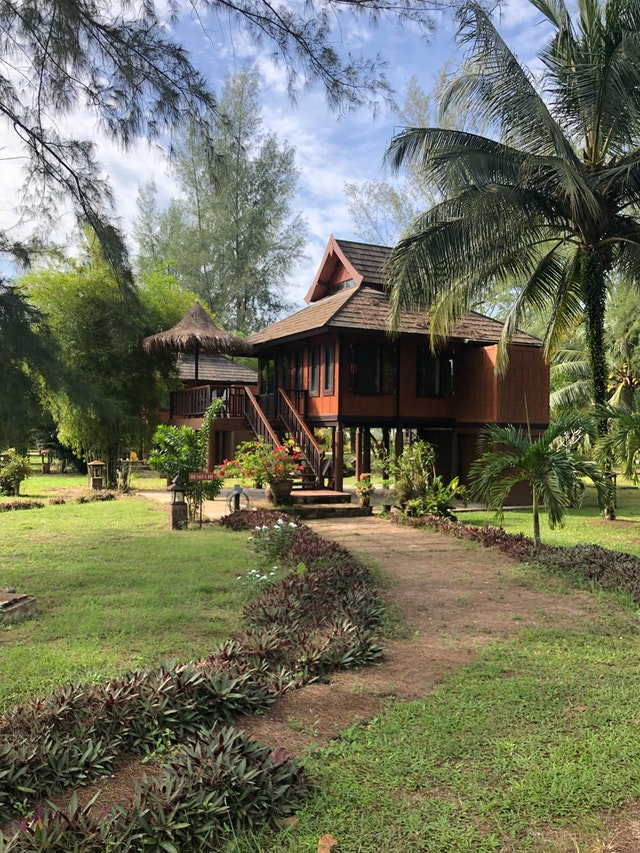How to Take Care of The Trees on Your Property
What has lots of bark, but no bite?
Trees, of course!
Ensure your landscaping is barking up the right tree by taking care of the towering giants – or aspiring towering giants – on your property.
Basic tree care is well within most people’s capabilities, but if you need advice or are learning for the first time, these tips and explanations can guide you down the right path.

Benefits of Having Trees on Your Property
Don’t take trees for granted! Their mere existence can make your life a little better, in ways you may never have expected – and no, it’s not just because they produce the oxygen you breathe and look beautiful.
When you plant trees on your property, you’re likely to see a modest return on your investment. Trees have been shown to increase your property value, but they also can help you save money on cooling costs in the summer, if they’re large enough to cast shade onto your home.
Trees can also prevent soil erosion and water run-off, keeping your lawn in good condition. They also can buffer noise pollution, which is invaluable if you live near a highway or busy street.
You can probably think of a few more benefits that having trees would bring you, and because there are such a wide variety of species available, you’re sure to find one that meets your needs and expectations.
Planting a Young Tree
If your property is short on trees, or you want something special, planting a young tree – called a seedling or a sapling – is a smart move. Although it will take years for it to reach maturity, you can enjoy watching it grow. Seedlings and saplings are also far less expensive than older, larger trees in terms of purchase and professional planting.
Before you choose a tree species, you’ll want to ask your local nursery manager what type will thrive in your area, and specifically in your yard. What kind of soil do you have? How much watering are you willing to do? What do you want the tree to do – shade, sound dampening, or beauty?
And before you dig, call your utility companies to mark where important pipes and wires are buried.
Trimming and Pruning Your Trees
As your trees grow, you can keep them looking their best by pruning or trimming back branches. You especially will want to remove any branches or limbs that are growing incorrectly or that could damage your home or other buildings on your property. The species of your tree will dictate whether branches and limbs are growing as they should.
Professionals recommend pruning while trees are dormant, because the act of trimming back branches can inspire them to grow. If done during dormancy, they’ll be ready for the warmer weather. However, if you prune in the fall, your trees may feel ready to grow just as winter hits. Of course, trimming timing doesn’t matter if you’re removing dangerous branches.
Leave major limb removal to the pros and hire tree trimming services for your own safety.
Irrigation Best Practices
Your trees may need water yearound, but especially during the summer, when water in the soil evaporates quickly.
The best time to water is in the morning or evening, but there isn’t really a perfect schedule for watering. How often and how much you water depends on your soil, the weather, the size of your tree, and when it was planted.
If your soil is dry and cracked, your tree likely needs water. Moist soil is best; never water so much that your soil becomes soggy. For established trees, provide 10 gallons of water for each inch of the trunk diameter at knee height, according to the Arbor Day Foundation.
Younger or newly-planted trees need more water as they acclimate to their new home and put down roots. For these trees, water once a day for the first couple of weeks after planting, and then once a week after that during the growing season.
Watch Out for Tree Diseases and Pests
Depending on where you live, tree pests and the diseases they bring with them are particularly prolific, such that you shouldn’t even trim your trees during the pests’ active seasons, lest you risk spreading infection to or from your trees.
Dutch elm disease, caused by insect infestations, and oak wilt, a fungus, are common diseases. They can rapidly cause mortality. Leaf rust, tar spots, and blight are also seen in trees.
Look up the tree diseases that are common to your area and familiarize yourself with how they spread and what symptoms look like. Being diligent is the only way you can help to ensure your trees stay healthy.
Don’t Be Afraid to Ask for Help
To ensure you’re taking care of your trees properly, hire an certified arborist. A local arborist is an expert in the trees that grow where you live and can advise you on what to do to keep yours healthy and thriving.
To find a certified professional, a quick Internet search of the phrase “arborist near me” will turn up possible candidates, or you can ask your friends, family, neighbors, and coworkers for their recommendations.



